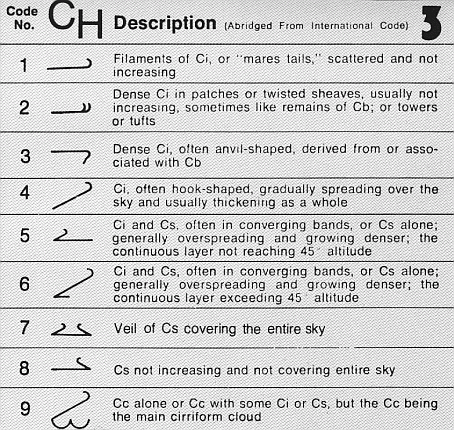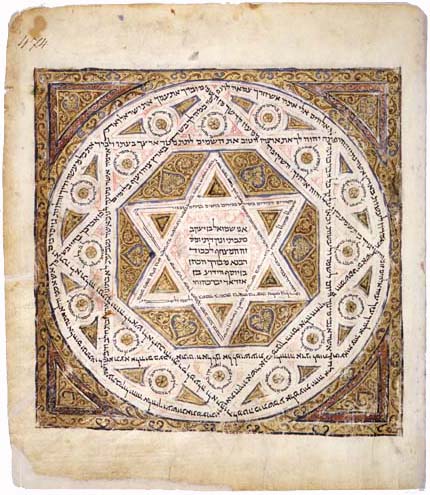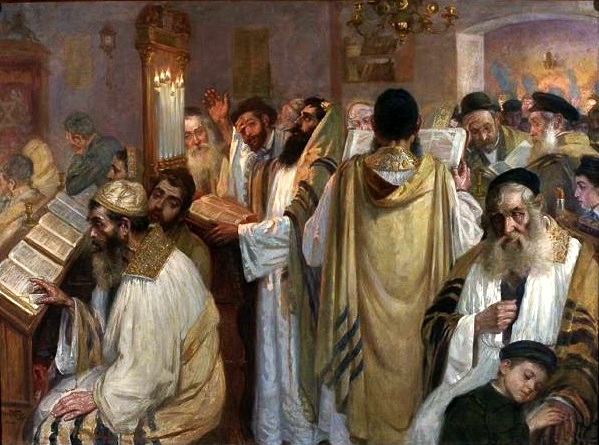|
Nitzavim
Nitzavim, Nitsavim, Nitzabim, Netzavim, Nisavim, or Nesabim ( — Hebrew for "ones standing," the second word, and the first distinctive word, in the parashah) is the 51st weekly Torah portion (, ''parashah'') in the annual Jewish cycle of Torah reading and the eighth in the Book of Deuteronomy. It comprises (Deuteronomy 29:10 onwards in some versions of the Hebrew Bible). In the parashah, Moses told the Israelites that all the people stood before God to enter into the covenant, violation of which would bring on curses, but if they returned to God and heeded God's commandments, then God would take them back in love and bring them together again from the ends of the world. Moses taught that this Instruction was not beyond reach, and Moses put before the Israelites life and death, blessing and curse, and exhorted them to choose life by loving God and heeding the commandments. The parashah is made up of 2,123 Hebrew letters, 553 Hebrew words, 40 verses, and 72 lines in a Torah Scro ... [...More Info...] [...Related Items...] OR: [Wikipedia] [Google] [Baidu] |
Vayelech
Vayelech, Vayeilech, VaYelech, Va-yelech, Vayelekh, Wayyelekh, Wayyelakh, or Va-yelekh ( — Hebrew for "then he went out", the first word in the parashah) is the 52nd weekly Torah portion (, ''parashah'') in the annual Jewish cycle of Torah reading and the ninth in the Book of Deuteronomy. It constitutes . In the parashah, Moses told the Israelites to be strong and courageous, as God and Joshua would soon lead them into the Promised Land. Moses commanded the Israelites to read the law to all the people every seven years. God told Moses that his death was approaching, that the people would break the covenant, and that God would thus hide God's face from them, so Moses should therefore write a song to serve as a witness for God against them. With just 30 verses, it has the fewest verses of any parashah, although not the fewest words or letters. (Parashat V'Zot HaBerachah has fewer letters and words.) The parashah is made up of 5,652 Hebrew letters, 1,484 Hebrew words, 30 verses, a ... [...More Info...] [...Related Items...] OR: [Wikipedia] [Google] [Baidu] |
Weekly Torah Portion
It is a custom among religious Jewish communities for a weekly Torah portion to be read during Jewish prayer services on Monday, Thursday, and Saturday. The full name, ''Parashat HaShavua'' ( he, פָּרָשַׁת הַשָּׁבוּעַ), is popularly abbreviated to ''parashah'' (also ''parshah'' or parsha), and is also known as a Seder (Bible), Sidra or Sedra . The ''parashah'' is a section of the Torah (Five Books of Moses) used in Jewish liturgy during a particular week. There are 54 parshas, or ''parashiyot'' in Hebrew, and the full cycle is read over the course of one Jewish year. Content and number Each Torah portion consists of two to six chapters to be read during the week. There are 54 weekly portions or ''parashot''. Torah reading mostly follows an annual cycle beginning and ending on the Jewish holiday of Simchat Torah, with the divisions corresponding to the lunisolar calendar, lunisolar Hebrew calendar, which contains up to 55 weeks, the exact number varying betwe ... [...More Info...] [...Related Items...] OR: [Wikipedia] [Google] [Baidu] |
Book Of Deuteronomy
Deuteronomy ( grc, Δευτερονόμιον, Deuteronómion, second law) is the fifth and last book of the Torah (in Judaism), where it is called (Hebrew: hbo, , Dəḇārīm, hewords Moses.html"_;"title="f_Moses">f_Moseslabel=none)_and_the_fifth_book_of_the_Christian_Old_Testament.html" ;"title="Moses">f_Moses.html" ;"title="Moses.html" ;"title="f Moses">f Moses">Moses.html" ;"title="f Moses">f Moseslabel=none) and the fifth book of the Christian Old Testament">Moses">f_Moses.html" ;"title="Moses.html" ;"title="f Moses">f Moses">Moses.html" ;"title="f Moses">f Moseslabel=none) and the fifth book of the Christian Old Testament. Chapters 1–30 of the book consist of three sermons or speeches delivered to the Israelites by Moses on the Plains of Moab, shortly before they enter the Promised Land. The first sermon recounts the Moses#The years in the wilderness, forty years of wilderness wanderings which had led to that moment, and ends with an exhortation to observe the law. T ... [...More Info...] [...Related Items...] OR: [Wikipedia] [Google] [Baidu] |
Cirrocumulus To Altocumulus
Cirrocumulus is one of the three main genus-types of high-altitude tropospheric clouds, the other two being cirrus cloud, cirrus and cirrostratus cloud, cirrostratus. They usually occur at an altitude of . Like lower-altitude cumuliform and stratocumuliform clouds, cirrocumulus signifies Atmospheric convection, convection. Unlike other high-altitude tropospheric clouds like cirrus and cirrostratus, cirrocumulus includes a small amount of liquid water droplets, although these are in a supercooled state. Ice crystals are the predominant component, and typically, the ice crystals cause the supercooled water drops in the cloud to rapidly freeze, transforming the cirrocumulus into cirrostratus. This process can also produce precipitation in the form of a virga consisting of ice or snow. Thus, cirrocumulus clouds are usually short-lived., p.21 They usually only form as part of a short-lived transitional phase within an area of cirrus clouds and can also form briefly as a result of the b ... [...More Info...] [...Related Items...] OR: [Wikipedia] [Google] [Baidu] |
Tanakh
The Hebrew Bible or Tanakh (;"Tanach" ''''. : ''Tānāḵh''), also known in Hebrew as Miqra (; : ''Mīqrā''), is the canonical collection of script ... [...More Info...] [...Related Items...] OR: [Wikipedia] [Google] [Baidu] |
Masoretic Text
The Masoretic Text (MT or 𝕸; he, נֻסָּח הַמָּסוֹרָה, Nūssāḥ Hammāsōrā, lit. 'Text of the Tradition') is the authoritative Hebrew and Aramaic text of the 24 books of the Hebrew Bible (Tanakh) in Rabbinic Judaism. The Masoretic Text defines the Jewish canon and its precise letter-text, with its vocalization and accentuation known as the ''mas'sora''. Referring to the Masoretic Text, ''mesorah'' specifically means the diacritic markings of the text of the Hebrew scriptures and the concise marginal notes in manuscripts (and later printings) of the Tanakh which note textual details, usually about the precise spelling of words. It was primarily copied, edited and distributed by a group of Jews known as the Masoretes between the 7th and 10th centuries of the Common Era (CE). The oldest known complete copy, the Leningrad Codex, dates from the early 11th century CE. The differences attested to in the Dead Sea Scrolls indicate that multiple versions of ... [...More Info...] [...Related Items...] OR: [Wikipedia] [Google] [Baidu] |
Aliyah (Torah)
An aliyah (Hebrew עליה, or aliya and other variant English spellings) is the calling of a member of a Jewish congregation up to the '' bimah'' for a segment of the formal Torah reading. The person who receives the aliyah goes up to the ''bimah'' before the reading and recites a blessing for reading of the Torah. After the portion of the Torah is read, the recipient recites another blessing. In many congregations, the recipient will stand to the side of the ''bimah'' during the next person's reading. Process A synagogue official, called a '' gabbai'', calls up several people (men in Orthodox and some Conservative congregations, or both men and women in others), in turn, to be honored with an ''aliyah'' ( he, עליה; pl. עליות, ''aliyot''; "ascent" or "going up"). The honoree (or, more usually, a designated reader) recites a blessing over the Torah, between each verse. Each reads a section of the day's Torah portion. There are always at least three ''olim'' (people called ... [...More Info...] [...Related Items...] OR: [Wikipedia] [Google] [Baidu] |
Central Conference Of American Rabbis
The Central Conference of American Rabbis (CCAR), founded in 1889 by Rabbi Isaac Mayer Wise, is the principal organization of Reform rabbis in the United States and Canada. The CCAR is the largest and oldest rabbinical organization in the world. Its current president is Lewis Kamrass. Rabbi Hara Person is the Chief Executive. Overview The CCAR primarily consists of rabbis educated at Hebrew Union College-Jewish Institute of Religion, located in Cincinnati, Ohio, New York City, Los Angeles, and Jerusalem. The CCAR also offers membership to those who have graduated in Europe from the Leo Baeck College in London (United Kingdom) and the Abraham Geiger College at the University of Potsdam (Germany), and others who joined the Reform movement after being ordained. Most of the last group graduated from either the Conservative Jewish Theological Seminary or the Reconstructionist Rabbinical College. The CCAR issues responsa, resolutions, and platforms, but in keeping with the princi ... [...More Info...] [...Related Items...] OR: [Wikipedia] [Google] [Baidu] |
Yom Kippur
Yom Kippur (; he, יוֹם כִּפּוּר, , , ) is the holiest day in Judaism and Samaritanism. It occurs annually on the 10th of Tishrei, the first month of the Hebrew calendar. Primarily centered on atonement and repentance, the day's observances consist of full fasting and ascetic behavior accompanied by intensive prayer as well as sin confessions (traditionally inside of a synagogue). Alongside the related holiday of Rosh HaShanah, Yom Kippur is one of the two components of the "High Holy Days" of Judaism. Etymology () means "day" in Hebrew and () is translated to "atonement". The common English translation of Yom Kippur is Day of Atonement; however, this translation lacks precision. The name Yom Kippur is based on the Torah verse, "...but on the 10th day of the seventh month it is the day of ''kippurim'' unto you..." The literal translation of ''kippurim'' is cleansing. Yom Kippur is a Jewish day to atone for misdeeds and become cleansed and purified from the ... [...More Info...] [...Related Items...] OR: [Wikipedia] [Google] [Baidu] |
Mahzor
The ''machzor'' ( he, מחזור, plural ''machzorim'', and , respectively) is the prayer book which is used by Jews on the High Holy Days of Rosh Hashanah and Yom Kippur. Many Jews also make use of specialized ''machzorim'' on the three pilgrimage festivals of Passover, Shavuot, and Sukkot. The ''machzor'' is a specialized form of the ''siddur'', which is generally intended for use in weekday and Shabbat services. The word ''machzor'' means "cycle"; the root ח־ז־ר means "to return". The term ''machzor'' originally referred to a book containing prayers for the entire year, including weekdays and Shabbat as well as holidays. Later (first in Ashkenazi communities) a distinction developed between the ''siddur'', which included weekday and Shabbat prayers, and the ''machzor'', which included festival prayers. Nevertheless, the original type of Machzor containing all of the prayers for the year continued to be used (even if less common) at least into the 20th century. Origin ... [...More Info...] [...Related Items...] OR: [Wikipedia] [Google] [Baidu] |
Reform Judaism
Reform Judaism, also known as Liberal Judaism or Progressive Judaism, is a major Jewish denomination that emphasizes the evolving nature of Judaism, the superiority of its ethical aspects to its ceremonial ones, and belief in a continuous search for truth and knowledge, which is closely intertwined with human reason and not limited to the theophany at Mount Sinai. A highly liberal strand of Judaism, it is characterized by lessened stress on ritual and personal observance, regarding ''halakha ''Halakha'' (; he, הֲלָכָה, ), also transliterated as ''halacha'', ''halakhah'', and ''halocho'' ( ), is the collective body of Jewish religious laws which is derived from the written and Oral Torah. Halakha is based on biblical commandm ...'' (Jewish law) as non-binding and the individual Jew as autonomous, and great openness to external influences and progressive values. The origins of Reform Judaism lie in German Confederation, 19th-century Germany, where Rabbi Abraham Geige ... [...More Info...] [...Related Items...] OR: [Wikipedia] [Google] [Baidu] |
Union For Reform Judaism
The Union for Reform Judaism (URJ), known as the Union of American Hebrew Congregations (UAHC) until 2003, founded in 1873 by Rabbi Isaac Mayer Wise, is the congregational arm of Reform Judaism in North America. The other two arms established by Rabbi Wise are the Hebrew Union College-Jewish Institute of Religion and the Central Conference of American Rabbis. The current president of the URJ is Rabbi Rick Jacobs. The URJ has an estimated constituency of some 880,000 registered adults in 831 congregations. It claims to represent 2.2 million, as over a third of adult U.S. Jews, including many who are not synagogue members, state affinity with Reform, making it the largest Jewish denomination. The UAHC was a founding member of the World Union for Progressive Judaism, of which the URJ is the largest constituent by far. Belief and practice Reform Judaism, also known as Liberal or Progressive Judaism, embraces several basic tenets, including a belief in a theistic, personal Go ... [...More Info...] [...Related Items...] OR: [Wikipedia] [Google] [Baidu] |






